Contents
Strawberry Zenga Zengan was bred in 1954 by German scientists. Over time, it has become widespread in personal garden plots and farm plantations due to its high yield and excellent taste.
The variety is well adapted to the climate, is frost-resistant and unpretentious. Below is a description of the variety, photos, reviews of Zenga Zengana strawberries.
Variety description
Zenga Zengana refers to varieties that can bear fruit with a short daylight hours. Fruit buds are laid with a day length of up to 12 hours.
The flowering of the variety occurs with a light day of 14 hours. After flowering, the strawberry crop ripens in a month. The variety is distinguished by late ripening, since fruiting occurs in mid-June.
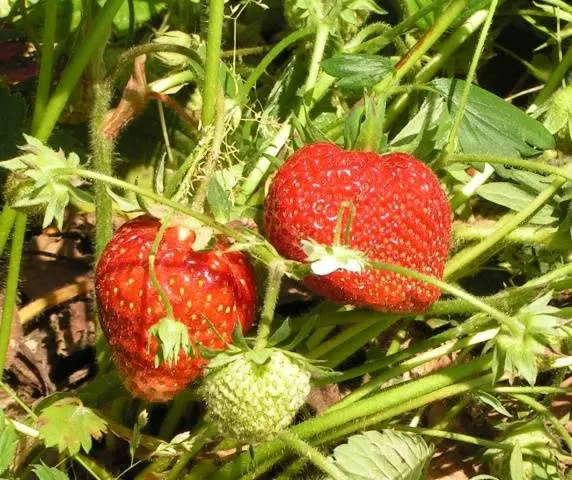
Bush characteristics
The external characteristics of the variety are as follows:
- tall shrub with a large number of medium-sized leaves;
- weak tendency to form a mustache;
- the arrangement of flowers is at the level of the leaves or slightly lower.
Features of berries
The description of Zenga Zengan Strawberry is as follows:
- average weight of berries – 10 g;
- the first copies reach 40 g, as the fruiting, the berries become smaller;
- rich red berries;
- with increased exposure to the sun, strawberries turn dark red;
- dense juicy pulp;
- uniform coloring of the berries of the variety;
- cone-shaped, expanding at the stem;
- pleasant sweet and sour taste;
- bright aroma of strawberries;
- yield up to 1,5 kg from one bush of the variety.
According to the description of Zenga Zengan strawberries, their fruits are suitable for various types of processing: freezing, drying, making jam or compote.
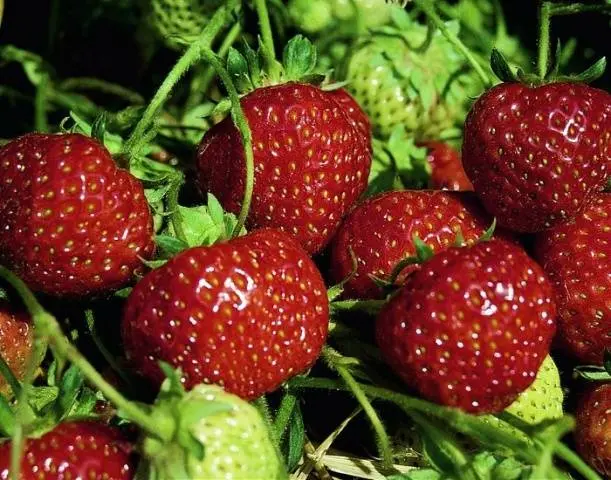
Landing order
Planting strawberries is carried out in early spring or autumn. It is recommended to purchase seedlings of the variety in specialized centers or nurseries. The variety propagates with the help of a mustache or by dividing the bush. After choosing a landing site, you need to fertilize the soil, and then proceed to planting work.
Choosing the right place
Strawberry Zenga Zengan prefers small slopes located on the southwestern side of the site. In such areas, the crop ripens much faster. Lowlands and areas prone to flooding in the spring are not suitable for planting.
The variety grows best on light chernozem soils. A few weeks before planting, the soil is dug up, weeds and plant debris are eliminated. With a high level of groundwater (less than 60 cm), it is necessary to equip high beds.
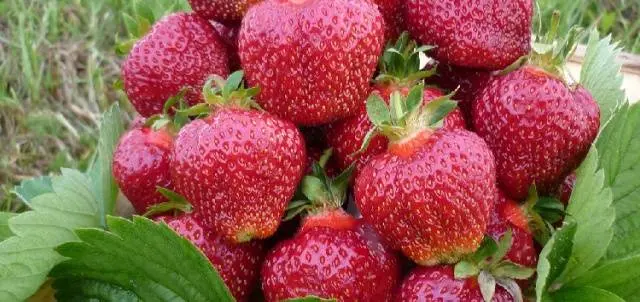
Heavy clay soils should be fertilized with peat, sand and compost. Universal fertilizer for the variety is a mixture of wood ash and mullein. For each square meter of beds, superphosphate (100 g), potassium salt (60 g) and humus (10 kg) can be added.
Carrying out landing work
For planting, plants are selected that have powerful roots longer than 7 cm and at least 5 formed leaves. Previously, the root system of seedlings must be placed in a growth stimulator.
Strawberries are planted with an interval of 20 cm. After 30 cm, a second row is formed. The two-line planting scheme assumes that the next two rows need to be done after 70 cm. This planting method is considered the best for the variety, since the plants ensure normal development without excessive thickening.
Holes 15 cm deep are dug in the beds, in which a small mound is formed. Seedlings of a variety are placed on it, the roots of which are carefully straightened. Strawberry seedlings are covered with earth, compacted a little and watered abundantly.
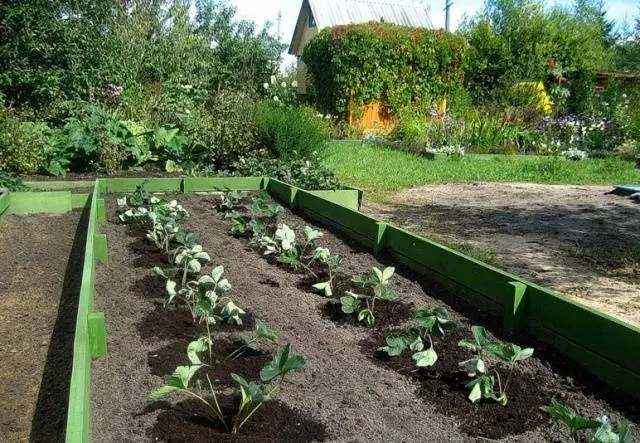
Care instructions
Zenga Zengana requires standard care, which includes watering, fertilizing and autumn processing. If this order is observed, the yield and resistance of strawberries to external factors increase.
Watering strawberries
Strawberry Zenga Zengan does not tolerate prolonged drought and lack of moisture. Under such conditions, there is a significant reduction in yield.
After planting, the plants are watered every day for the next 2 weeks. Then between the procedures make longer intervals of 1-2 days.
Strawberries of this variety respond well to abundant watering, which occurs rarely, than to the constant introduction of moisture in small quantities. Plants are watered under the root in the morning or evening hours. Previously, the water should settle and warm in the sun.
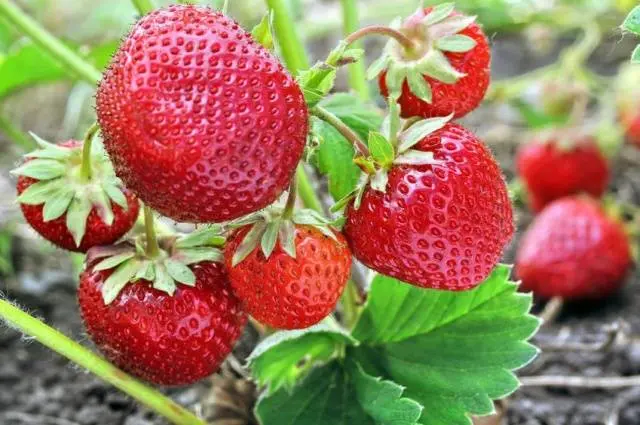
During flowering and fruiting, soil moisture should be maintained at a level of up to 80%. After harvest, watering will allow the variety to form flower buds for the following year.
Application of fertilizers
Organic or mineral substances are used to fertilize strawberries. Top dressing begins in the autumn by introducing humus or rotted manure. These components can be used in place of mulch.
Before the flowering of the berry, potassium-based solutions are prepared (potassium nitrate, potassium sulfate, wood ash). With their help, the taste of the berries of the variety is improved. Fertilizer is applied when watering plantings.
In autumn, phosphate fertilizers (ammophos, diammophos, superphosphate) should be applied. They will increase the yield of the berry for the next year.
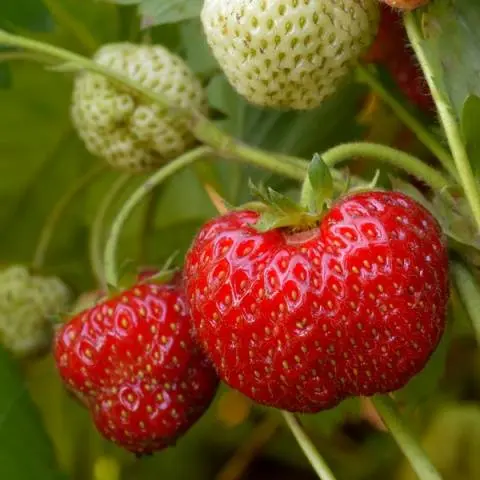
Autumn care
With proper autumn care, Zenga Zengan strawberries will endure the winter well:
- dry, excess and damaged leaves must be cut;
- the soil between the bushes should be loosened to a depth of 10 cm;
- plants spud to protect the root system with an additional layer of earth;
- peat or straw is used for soil mulching;
- after applying phosphate fertilizers, strawberries are watered.
Disease protection
The Zenga Zengana variety is the least resistant to gray mold and spotting. However, this variety of strawberries is rarely affected by powdery mildew, verticillium and diseases of the root system. According to reviews of Zenga Zengan strawberries, the variety is also resistant to major pests: strawberry mites, whiteflies, leaf beetles, and aphids.
To protect strawberries from diseases, it is recommended to follow the rules for caring for plants. It is especially important to prevent high humidity, which contributes to the spread of fungal spores.
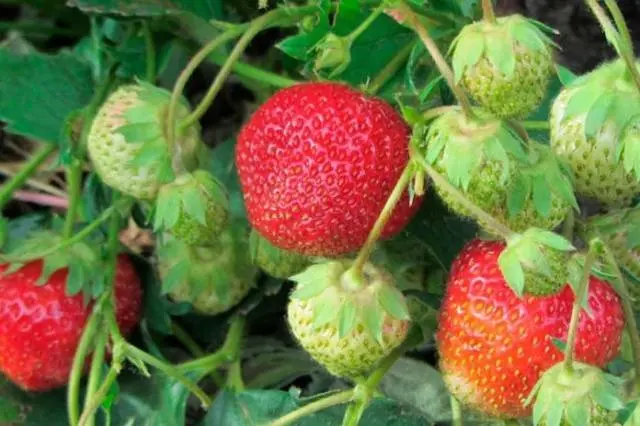
Gray mold
With gray rot, the lesion covers the berries in the form of a layer of mycelium, which spreads around the spores. The causative agents of this disease live in the soil and on the remains of plants, they survive frosts in winter and drought in summer.
Any variety of strawberry is susceptible to gray rot, especially in the absence of access to sunlight, dense plantings and high humidity.
To prevent the disease, plants are treated with copper chloride or fungicides. Work is carried out before the start of the growing season.
Leaf spot
Strawberry blotch appears as purple spots on the leaves that turn brown over time. As a result, in the period from August to October, the leaves die off, which negatively affects the winter hardiness and yield of strawberries.
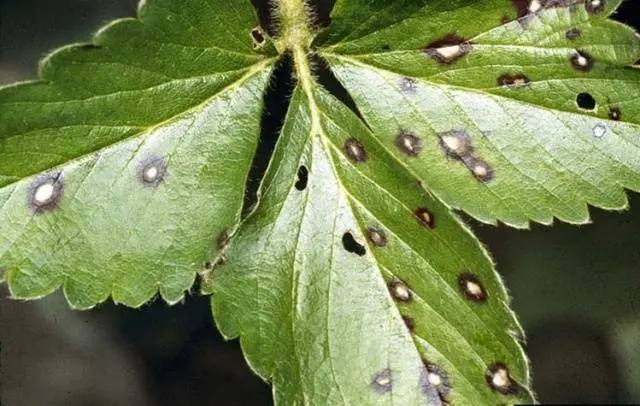
When signs of a disease appear, strawberries are treated with chlorine oxide or Bordeaux liquid at a concentration of 1%. Affected plants cannot be treated. They are dug up and destroyed to avoid further spread of the disease.
To prevent spotting, you need to spray strawberries with Fitosporin, remove old castings and keep the area clean. Plants are fed with potassium and phosphorus, which increase their immunity.
Reviews of gardeners
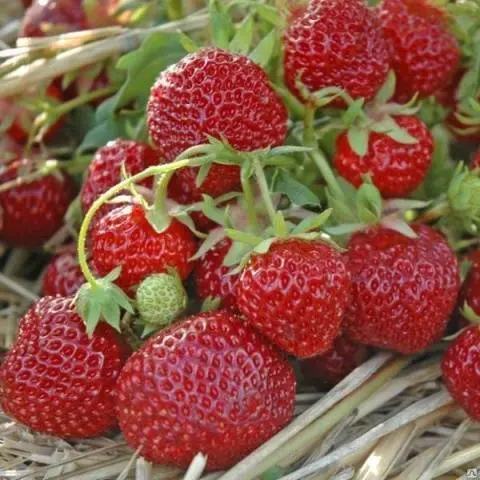
Conclusion
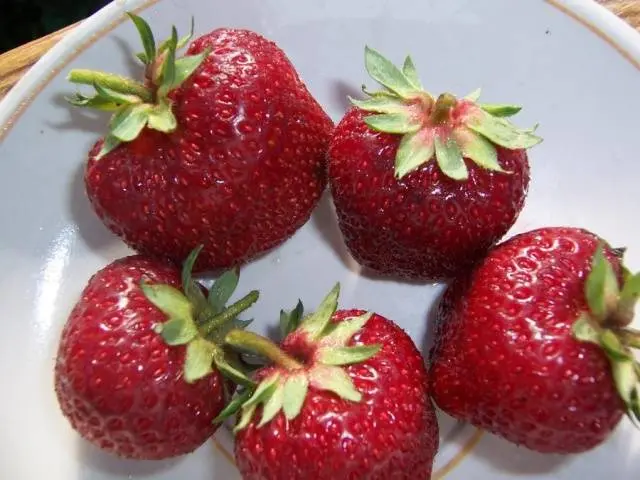
Zenga Zengana is a common variety adapted to growing in conditions. Strawberries are distinguished by high yield, sweet and sour taste and pleasant aroma. The variety is susceptible to fungal diseases, especially at high humidity. Strawberry care includes standard procedures: watering, fertilizing, treatment for diseases and autumn pruning.









